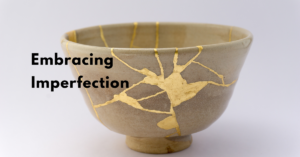There’s something truly special about the art of journaling and the freedom it provides for self-expression. From therapeutic benefits to creative exploration, journaling offers a unique platform for processing emotions, fostering self-awareness, and stimulating creativity. In this blog post, we will probe into creative ways to enhance your journaling experience, spark inspiration, and unleash your inner creativity through various techniques and prompts. Whether you’re a seasoned journaler looking to mix things up or a beginner eager to explore the world of journaling, these creative ideas will empower you to express yourself authentically on the pages of your journal.
Discovering the Benefits of Journaling
Boosting Mental Health and Clarity
Journaling has long been praised for its therapeutic benefits on mental health. By putting thoughts onto paper, individuals can better process and make sense of their emotions, leading to a clearer mindset. The act of journaling can provide a sense of release, reducing stress and promoting mental clarity.
Enhancing Creativity and Self-Expression
To enhance creativity and self-expression, journaling provides a safe space for individuals to freely explore their thoughts and ideas. Whether through writing, drawing, or even collaging, journaling can inspire creativity and unlock new perspectives. It allows individuals to research into their innermost thoughts and emotions, fostering a deeper connection with their authentic self.
SelfExpression
Journaling serves as a powerful tool for self-expression. By articulating thoughts and feelings on paper, individuals can gain clarity on their identity, values, and aspirations. Through the creative process of journaling, individuals can express themselves in unique and authentic ways, allowing for personal growth and self-discovery.
Choosing Your Journaling Medium
Traditional Paper Journals
One of the most classic and timeless ways to journal is with a traditional paper journal. The act of putting pen to paper can be incredibly cathartic and personal, allowing you to fully immerse yourself in the journaling experience. You can choose from a variety of notebooks, journals, or even handmade paper to suit your style and preferences.
Digital and Online Platforms
One convenient and modern way to journal is through digital and online platforms. There are various apps and websites specifically designed for journaling, offering features like password protection, multimedia integration, and cloud storage for easy accessibility across devices. You can choose from a range of templates and layouts to customize your journal to reflect your personality.
Platforms like Penzu, Day One, and Journey are popular choices for digital journaling, each offering unique features to enhance your journaling experience. With the option to add photos, videos, audio recordings, and even location tags, digital journaling allows for a more dynamic and interactive way to express yourself.
Techniques to Spark Your Journaling Practice
Freewriting and Stream of Consciousness
Consciousness starts with allowing your thoughts to flow freely onto the paper without restriction or judgment. Set a timer for 10-15 minutes and just write whatever comes to mind. Don’t worry about grammar, punctuation, or coherence. This exercise helps to unlock your creativity and get past any mental blocks that may be holding you back.
Lists, Sketches, and Mixed Media Exploration
The key to sparking creativity in your journaling practice is by embracing The versatility of different mediums. Mix things up by creating lists, doodling sketches, or incorporating mixed media like watercolors, collages, or photographs. This approach not only adds visual interest to your journal but also helps you explore your thoughts and emotions in a more dynamic way.
Your journal is a blank canvas for self-expression. Experiment with different techniques to find what resonates with you. Whether you prefer making lists, sketching, or playing with mixed media, the important thing is to keep exploring and discovering new ways to express yourself through journaling.
Making Journaling a Habit
Setting Aside Time for Reflection
Many people struggle to make journaling a habit because they find it hard to consistently set aside time for reflection. To overcome this challenge, it’s important to schedule a specific time each day dedicated to journaling. Whether it’s first thing in the morning with a cup of coffee or last thing before bed, having a set time can help make journaling a regular part of your routine.
Integrating Journaling into Your Daily Routine
On the other hand, integrating journaling into your daily routine can be a powerful way to ensure you make time for self-reflection. Try to link journaling with an existing habit, such as after your morning exercise routine or before winding down for the night. Another helpful tip is to keep your journal in a visible place, like on your bedside table or next to your favorite chair, so you’re more likely to pick it up and write regularly.
Overcoming Common Journaling Obstacles
Dealing with Writer’s Block
Obstacles are a natural part of the journaling process, and one common hurdle that many face is writer’s block. When you find yourself stuck and unable to put words on the page, don’t get discouraged. Use prompts, such as a favorite quote or a memory from your day, to jumpstart your writing. Sometimes just starting with a stream of consciousness can help break through the block and get your thoughts flowing.
Maintaining Privacy and Personal Boundaries
The importance of maintaining privacy and personal boundaries in your journal cannot be overstated. Your journal should be a safe space for you to express your thoughts and emotions without fear of judgment or intrusion. To maintain privacy, consider using a lockable journal or keeping your journal in a secure location. Remember that it is okay to set boundaries for yourself in terms of what you choose to share in your journal and what you keep private.
As you research into the world of journaling, remember that boundaries are there to protect your innermost thoughts and feelings. Establishing clear boundaries can help you feel safe and secure in expressing yourself freely and honestly in your journal.
Final Words
From above, it is evident that journaling is a versatile and effective tool for self-expression. Whether through writing, drawing, or using other creative mediums, journaling can help you explore your thoughts, emotions, and ideas in a unique way. By incorporating these creative ways of expression into your journaling practice, you can tap into your creativity, find clarity, and experience the joy of self-discovery. So, pick up that pen, paintbrush, or whatever inspires you, and start your journaling journey today!


